Altima features fill 2013 generation gap
By John Gilbert
Nissan’s Altima, is attaining unprecedented success in the sixth and final year of its current styling generation. Model year 2013 signals time for the fifth generation Altima, however, offering a simple challenge: make the best-ever Altima better.
First drives of the 2013 Altima, from Nashville, which is near Nissan’s U.S. base in Smyrna, Tennessee, indicate Nissan connected on its objectives. Not that the current car is outdated. Nissan carved out an 8.2 percent market share in 2011, its best ever, and in the process became the No. 2 Asian brand in the U.S., behind only Toyota, but ahead of Honda, Mazda, Hyundai and the rest. With 75 percent of its U.S. sales coming from U.S. plants, Nissan became the top non-domestic manufacturer in the U.S.
The Altima was the standard-bearer for the company, and still is. Nissan proclaimed that this is the 20th anniversary of the first Altima, which came out in its first generation as a 1992 model, and with new generations in 1998, 2001, and 2007, over 3.8 million Altimas have been sold. After finishing second to the Camry among midsize U.S. sales in 2011, Altima recorded its best month ever in March of this year. When the new Altima reaches showrooms in July, it will start Nissan’s biggest launch ever.
In what promises to be a pivotal year for Nissan, and the auto industry’s burgeoning midsize class, Nissan has the benefit of having invested so much refinement in its primary corporate engines — the 2.5-liter 4-cylinder and the 3.5-liter V6 — that it is standing pat with those two offerings in the new car.
The company’s confidence in its two strong engines allows it to focus on high-tech features, aimed at giving Altima buyers the feeling the comfortable and stylish midsize sedan they’ve bought is a higher-class and more luxurious car than the sticker price indicates.
Those stickers cover the base car with the 2.5, and the base 3.5 V6-powered Altima, where both versions have easily discerned models. The 4 starts with the base model at $21,500, the 2.5S at $22,500, the 2.5 SV at $24,100, while the V6 models are the 3.5S at $25,360, 3.5SV at $27,780, or the 3.5SL, at $30,080.
The base 2.5 comes with a lot of standard equipment, including dynamic stability control and active understeer control — which imperceptibly brakes the inside front wheel in understeering situations, helping guide the car around the curve — plus keyless entry and start, Bluetooth with streaming audio, fine vision instrumentation, and six airbags. Move up to S and you add cruise control, 5-way power seats, auto-on and off headlights, and six speakers for the audio. The SV adds 17-inch alloy wheels, remote start, rearview monitor, dual zone air-heat with rear vents, and NissanConnect with XM satellite radio, hands-free texting, Pandora and iPod connectivity.
A Convenience package features 8-way power heated leather seats and Bose audio; Navigation package has heated steering wheel, navigation touchscreen, moonroof, and premium interior; and the Technology package has Google, blind-spot alert, and moving object detection. Those three packages are available with lesser models, and are part of the V6’s SL model upgrade.
Those are just some of the features available, and one of the most impressive is the inclusion of NASA-type bucket seats, which are designed to offer optimum support that is similar to what NASA has developed to eliminate fatigue and distribute muscular load more evenly for weightless travel.
The Altima isn’t weightless, of course, but it is 79 pounds lighter than the current model it replaces, thanks to liberal use of ultra high-strength steel and aluminum for strength and structural rigidity without extra weight. As for stylish travel, the Altima definitely looks the part. Lower and wider than its predecessor, the new Altima incorporates more of a curvaceous body, with its primary character line rising over the front wheel-well then tapering down before gradually sweeping back up toward the rear wheel-well, and topped by a passenger compartment set off by a steeply sloped windshield “A” pillar and a gently arching roofline that connects symmetrically with the body’s curves, ending with a semi-fastback roofline over the trunk. Read more
The “I” in ILX Does NOT Stand for Integra
By John Gilbert
SCOTTSDALE, ARIZONA — Acura is introducing a new, entry-level ILX sedan for the 2013 model year, a good-looking sedan that will fit in below the luxury RL , the smaller entry-luxury TL, and the midsize TSX in Acura’s stable.
To me, it was a cause for celebration, because I thought Acura had made a mistake when it discontinued the Integra, a sporty, entry-level sedan, back in the mid-1990s, and the new ILX might be a worthy replacement. At the introductory press conference, I raised my hand and asked if it would be logical to consider the ILX as being what the previous Integra might now be. Acura officials were emphatic to say there was no connection or resemblance to the long-gone Integra, as if they thought my question was an insult.
The new generation of Acura engineers needn’t be so sensitive; I meant the resemblance as a compliment. To humor those corporate officials, let’s just say the replacement of a Civic-based, sporty, high-mileage, entry-level sedan from a decade ago with an all-new Civic-based, sporty, high-mileage, entry-level sedan is merely a coincidence. When a coupe is added in a year or two, that will be coincidence, too.
There is nothing aged about the ILX. I like the design, particularly the pinched center of the lower fascia that comes up to meet the bumper. Models will be simple to differentiate, with really only one car, separated by option packages.
The base “Standard” is powered by a 2.0-liter 4-cylinder with 150 horsepower and 140 foot-pounds of torque and a 5-speed automatic, and Acura’s first-ever Hybrid, with basically the same 1.5-liter with Lithium Ion battery pack from the Honda Civic Hybrid is an available option. Moving up is the Premium package, with either the 2.0 or the TSX’s hot 2.4-liter twin-cam engine with 201 horsepower and 170 foot-pounds of torque. Top of the line is the Technology package, which has either the 2.0 or the Hybrid — which combines 91 horsepower from a 1.5-liter 4 and 23 electrical horsepower from the Lithium-Ion battery pack for a combined 114 horsepower and 127 foot-pounds of torque, and adds all sorts of premium features.
The base car starts at $25,900, and includes keyless access and ignition, power moonroof, Bluetooth wireless telephone interface, dual-zone climate control, USB with iPod and iPhone compatibility with text-message capability, and Pandora internet radio. The Premium package boosts the price to $29,200, and with the 2.4-liter engine is the hot-rod of the group, with a 6-speed manual transmission; it has all the base car’s standard features plus the Premium package’s leather interior, heated front seats, 8-way power driver’s seat, high-intensity headlights, and foglights. The Technology model adds Acura navigation with voice recognition and real-time traffic and weather, the Panasonic ELS 365-watt, 10-speaker surround audio, a GPS, and a solar-sensing climate-control system.
There is no separate Technology model, but the car with everything would be the Hybrid version, starting at $28,900, including all the Premium package features, plus the high-mileage gas-engine/battery-pack system. Fuel economy estimates from the EPA show 24 city/35 highway for the 2.0, 22/31 for the 2.4, and 39/38 for the Hybrid. Read more
Escape Eco-Boosts chance of staying No. 1
New Ford Escape Has Style and Features to Hold No. 1
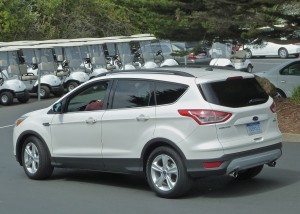
Boxy lines are gone, as 2013 Escape gains new style, power and enough features to stay atop SUV sales.
By John Gilbert
SAN FRANCISCO, CA. — The current Ford Escape is a sales winner, but its familiar boxy shape is being replaced by a better-looking, better-handling and more powerful and versatile model, with perfect timing to take the top-sell of the entire SUV industry to new levels of sophistication and technology for the 2013 model year.
Technology and a tough economy are dominating the industry, and the Escape was positioned perfectly to capitalize on the rush toward smaller utility vehicles coupled with demands for higher fuel economy with downsized but still feature-packed compact utility vehicles. The 2012 Escape is the last of the original boxy design, and Ford did its best to fill it with its latest gadgetry during the new model’s incubation. The reward was that 2011 “was our best sales year ever, with 254,000 sold,” said Frank Davis, Ford’s executive director of engineering, and strong sales continue in 2012, especially with model-end bargains sure to come.
“But,” Davis added, “you’ll find that from the standpoint of styling and dynamics, the new Escape is truly a 21st century SUV.”
Last year’s sales success was a bit of a surprise, because the Honda CR-V had been the sales leader of the compact SUV category from 2007 through 2010, while Ford had been content to be a strong second, while focusing — so to speak — on its new Explorer, which showed a 124 percent sales increase in 2011, and the midsize Edge and Flex. The trusty Escape shot up in sales prominence with a major assist from a natural disaster. The earthquake and tsunami that struck Japan in March of 2011 seriously inhibited Honda production, most notably of parts for the CR-V. Many potential CR-V buyers seeking a new vehicle looked for an alternative, and the Escape was ready and willing to meet their demands.
For the coming year, new generations of both the Ford Escape and the Honda CR-V have been introduced, which should make their current year’s battle for the top spot compelling indeed. Both vehicles are totally redesigned on the outside, and in fact share similarly sleek lines, and both also have new interiors accommodations. Ford gives the Escape extra push with new and more sophisticated powertrains. It may sound startling to hear that Ford has outflanked Honda in powertrain offerings, but while Honda has chosen to stay with its dependable but aging 2.4-liter 4-cylinder, as well as its smooth but dated 5-speed automatic in the new CR-V, Ford is installing two new EcoBoost turbocharged 4-cylinder engines to join the returning 2.5-liter base 4 with a new 6-speed automatic transmission in the new Escape,.
It will be up to consumers to decide how important high-tech power is, as well as in styling and features, where the Escape and CR-V are extremely competitive with each other, just as they are with exterior and interior dimensions and stowage potential. For example, the CR-V has improved rear cargo space to 37.2 cubic feet while the new Escape has 34.3 cubic feet behind the rear seats, but when you fold the rear seats down, the CR-V’s 61.4 cubic feet is bypassed by Escape’s 68.1 volume.
The bigger point of competition will undoubtedly be under the hood. Honda’s strong 2.4 engine — which can be found in early 1990s specialty cars like the Prelude, and as the base engine in the current Accord and Acura TSX — delivers 185 horsepower at 7,000 RPMs and 163 foot-pounds of torque at 4,300 revs, with a towing capacity of 1,500 pounds.
Most consumers might buy a larger, beefier SUV if they tow heavier trailers, or tow a lot, but the new Escape attempts to cover all those bases. In the new Escape the base engine is the 2.5-liter 4, with 168 horsepower at 6,000 RPMs and 170 foot-pounds of torque at 4,500 RPMs, and a 1,500-pound tow capacity. Next in availability is a 1.6-liter EcoBoost, where turbocharging boosts horsepower to 178 at 5,700 revs and torque to 184 at only 2,500 RPMs, with a 2,000-pound towing capacity. The top engine is the 2.0-liter EcoBoost, with 240 horsepower at 5,500 RPMs and a whopping 270 foot-pounds of torque at 3,000 at RPMs, which has a towing capacity of 3,500 pounds. Read more
Dart clears hurdles as compelling compact
By John Gilbert
AUSTIN, TEXAS — Chrysler’s new-car stable was so desperate for a compact car that the bar was pretty low for the 2013 Dodge Dart to hurdle. For example, imagine that to be successful you only had to pick two of the following assets: A. good looks, outside and inside; B. tight build quality; C. excellent fuel economy; D. reasonable base price; E. performance that is pleasingly peppy; F. precise and agile ride and handling; G. genuine high-technology features; and H. contemporary connectivity standards.While picking only two, be aware that there are a number of successful cars out there without more than a couple of those assets. When the 2013 Dodge Dart makes its way into showrooms by June of 2012, however, the Dart listing will need one more choice, for “all of the above.” The Dart seems to have it all, after a brief preliminary test of preproduction models, starting with the first-glance attractiveness that makes it such a bonus to have Italian flair mingling with Chrysler engineering.
All of that, and the rest of the endless array of features, would fall flat, however, without the allure of initial pricing, in order to compete with the likes of Honda Civic, Ford Focus, Mazda 3, Chevrolet Cruze, Toyota Corolla, Nissan Sentra, and Hyundai Elantra. The Dart gobbles up that objective, too.
Five different Dart models expand from there with assorted technical and package options. They include:
- SE, with all the good looks standard 2.0-liter engine, four-wheel disc brakes, brake assist, brake-lock differential, stability control with electronic roll mitigation, traction control, plus 10 airbags, at $16,790.
- SXT, which adds extra content such as power mirrors, taillight surround, heavy-duty battery, console, 17-inch wheels, and makes a turbo engine available, for $18,790.
- Rallye, adding foglights, trip computer, steering wheel remote controls, and leather-wrapped steering wheel, at $19,790.
- Limited adds a U-Connect 8.4-inch touchscreen with voice-command multimedia, numerous power options including a nine-speaker audio upgrade, sunroof, active grille shutters and underbody panels to enhance the drag coefficient to a scant 0.285, at $20,790.
- R/T, with all the Limited goodies plus a 184-horsepower 2.4-liter engine, special leather seats, sport suspension and various performance trim features, for $23,290.
The performance-oriented R/T won’t be available until a few months after the rest of the Dart fleet reaches showrooms. But one of the dizzying features about the Dart is that it will be available for custom-ordering and rapid-delivery, two things which might seem mutually exclusive. It’s all in the plan for allowing customers to select a Dart with exactly the equipment an individual might want. Everything above the basic SE gets the “racetrack” taillights, which are featured on the Charger and encircle the whole rear facade with a row of 152 LED lights.
Among the major challenges facing Chrysler Corporation two years ago was that consumers reacted to the plunging economy by scrambling to buy smaller and more fuel-efficient cars, and there were no — as in zero — compact or subcompact vehicles anywhere to be found in the entire Dodge-Chrysler inventory. The Neon had been OK, but disappeared in favor of the Caliber, which was precisely between small SUV and tall station wagon in a netherworld that left it out of either category.
Fiat’s buyout came along just about then, saving the company from potential extinction. Immediate renovation of the interiors and feature trim on all existing Dodge and Chrysler vehicles was impressive, but there was still the major vacancy — no compact car in an ever-more-compact world. Fiat wanted to come back into the U.S. market with its own Fiat 500 subcompact, as a separate entity, and that has happened. Meanwhile, Dodge and Chrysler had decided to discontinue the Caliber two years ago, and when Fiat installed Sergio Marchione as new Chrysler CEO, the idea of a new compact car was hot on the griddle. In November of 2010, the decision was made — Go! Read more


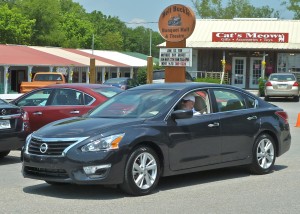
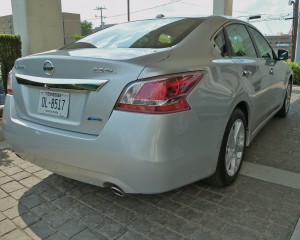
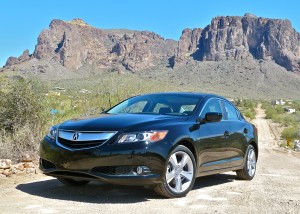
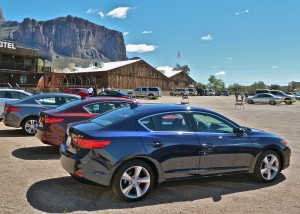
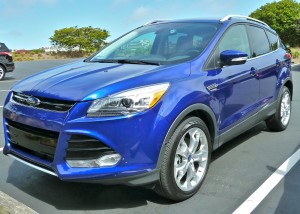
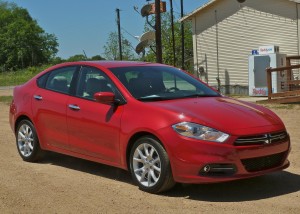
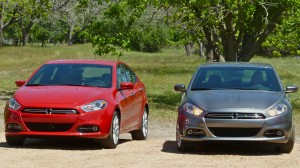
 John Gilbert is a lifetime Minnesotan and career journalist, specializing in cars and sports during and since spending 30 years at the Minneapolis Tribune, now the Star Tribune. More recently, he has continued translating the high-tech world of autos and sharing his passionate insights as a freelance writer/photographer/broadcaster. A member of the prestigious North American Car and Truck of the Year jury since 1993. John can be heard Monday-Friday from 9-11am on 610 KDAL(www.kdal610.com) on the "John Gilbert Show," and writes a column in the Duluth Reader.
John Gilbert is a lifetime Minnesotan and career journalist, specializing in cars and sports during and since spending 30 years at the Minneapolis Tribune, now the Star Tribune. More recently, he has continued translating the high-tech world of autos and sharing his passionate insights as a freelance writer/photographer/broadcaster. A member of the prestigious North American Car and Truck of the Year jury since 1993. John can be heard Monday-Friday from 9-11am on 610 KDAL(www.kdal610.com) on the "John Gilbert Show," and writes a column in the Duluth Reader.